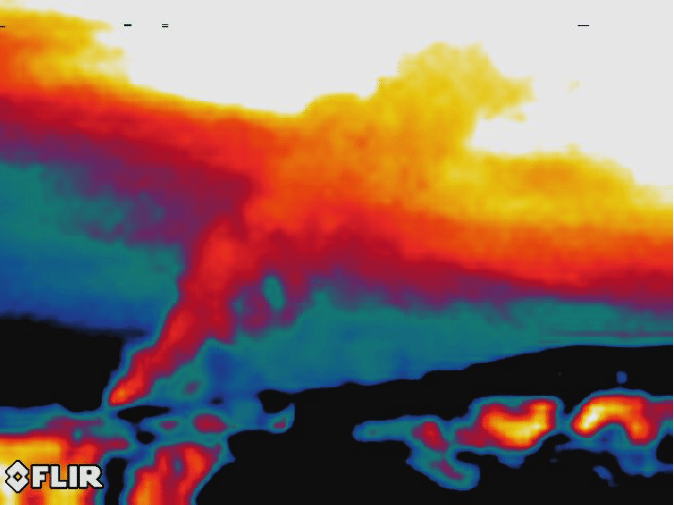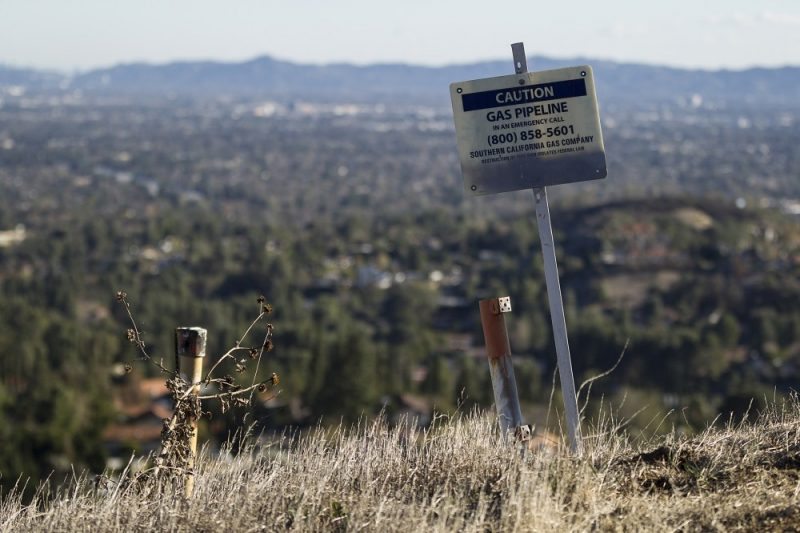This Sunday marks one year since the beginning of one of the biggest climate disasters in recent history: the Porter Ranch gas leak.
Over the course of 110 days, 50 tons of natural gas poured into the atmosphere every hour from a storage well owned by Southern California Gas, forcing 15,000 residents to evacuate their homes in California’s Aliso Canyon. The public health and environmental effects were so bad they forced Governor Jerry Brown to declare a state of emergency.
Last month, Southern California Gas — the company responsible for the leak — was asked to pay a $4 million to settle criminal charges. It made more than $10 billion in profits last year. Fresh off that slap on the wrist, the company now wants to reopen the Porter Ranch facility.
Here are three reasons we can’t let that happen.
1. Natural Gas Is a Climate and Health Catastrophe
The Porter Ranch leak was primarily methane, the main component of natural gas. Methane is 84 times more powerful than carbon dioxide at fueling climate change over a 20 year period, meaning the 97,100 metric tons of methane that leaked from Porter Ranch were huge contributors to climate change.
In fact, that’s equivalent to the climate impacts of 1,735,404 cars on the road for a full year.
But that’s just the methane.
Benzene, a toxic carcinogen, and hydrogen sulfide, which causes nausea and skin irritation, were also detected in the Porter Ranch area during the leak and after it was sealed. According to the Los Angeles County Health Department, 81 percent of residents in the area reported symptoms consistent with exposure to these toxins while the leak was active, and 63 percent reported symptoms after the leak was sealed.

Special equipment made the extent of the gas leak visible.
2. Safety Today Does Not Guarantee Safety Tomorrow
Since the leak began last year, there’s been a moratorium in place on gas injections at Porter Ranch until Southern California Gas can prove the facility and its wells are safe.
Since then, 77 storage wells have had to be taken out of operation and ten are yet to pass required safety tests. But even if they did, that “safety” today means little for future generations. When it comes to oil and gas infrastructure, the fossil fuel industry’s track record overwhelmingly shows that it’s not a question of there will be a spill, leak, or accident — it’s when.
At a time when thousands of residents are still suffering the health impacts of last year’s leak, it would be grossly irresponsible to reopen the Porter Ranch facility and risk even more exposure to toxic, climate-polluting chemicals.
3. We Don’t Even Need Natural Gas
Don’t fall for the fossil fuel industry’s portrayal of natural gas a sustainable alternative or some kind of “bridge fuel.” That might sound nice, but it’s false. Natural gas is every bit as polluting and damaging to our climate as coal or oil, and the Porter Ranch leak proves it.
The only way to keep communities healthy and stop runaway climate change is to keep fossil fuels in the ground and move quickly to clean, renewable energy. And that leaves no place for facilities like Porter Ranch.


